Bikernet/Cycle Source Sweeps Build Part 5 Sponsored by Xpress
By Robin Technologies |
I’ve never had so much fun building a bike, and it’s not for me. This one-off custom, art object, long-run bobber, chopper, will be awarded to either a Cycles Source subscriber or a Bandit’s Cantina subscriber on Bikernet.com. There’s always a growing buzz around building any bike. The vibe could be associated to the deadline, like the run to Sturgis, or a Bonneville land speed record effort, or for many shops, it’s a particular customer’s dream project. In this case, Gary Maurer, and Jules, from Kustoms Inc., created the aura of the build.
Okay, it started with Prince Najar and spread to the Crazy Horse Engine Company, and Jason from Texas Frame Works. I can feel it anytime I speak with Gary at Kustoms Inc., or John White from Crazy Horse. John runs a massive construction equipment company, but when we discuss his bottle cap engines, he glows and gets pumped. Gary and Jules built hotrods for years. Much of their fabrication codes come from building record-breaking dragster. They still hold a 6.51 second record at 209 mph with a Larry Morgan 500 cubic- inch pro stock engine.
Kustoms Inc. is a talented team capable of almost anything mechanical, but it’s their level of passion for the craft and every element of the build that’s captivating. Take for instance, mounting these classic 3.5 gallon Biker’s Choice re-popped tanks.
During the initial, design Gary planned the bike around classic H-D fatbobs, and bent the backbone of the frame to match the radius of the tank tops. “It’s basically a 12mm or ½-inch roll to match these tanks,” Gary said. “The tanks are almost flat at one point, but we work around them.”
With a ring roller/radius machine containing two dies on the bottom and one on top, he pushed the 1 3/4-inch tubing down 1mm at a time, forming the radius. He rolled the backbone slightly and then compared it to the tank, and rolled it some more. If his tubing length was long enough, it would form a 20-foot diameter circle.
He selected 3.5-gallon tanks since, the exposed frame backbone spreads the tanks and gives them the appearance of larger 5-gallon tanks. “Five gallon tanks would be too large,” Gary said. “During the mounting process, we level out the 3.5-gallon gas caps, eliminating the droopy look, so they appear similar to 5-gallon tanks when finished.”
Gary constantly keeps ride-ability in mind; consequently, he vents his tanks with a tee between the tanks, which he runs near the neck to be above the tanks. “The caps don’t always do the trick,” Gary said, “and once in a while can cause a vapor-lock.”
Then Julie went to work fabricating cosmetic caps to cover the indents in the front of the tanks, the speedo portion of the tank, and the stern indents. Each chunk of metal is bent 90 degrees in the metal break. Then she uses another tool to stretch and shrink each piece until it fits the contour of the tanks perfectly.
Gary started to chuckle was we talked about the classic tanks. “I’ve never run across a set of fatbobs that matched. One is always slightly longer than the other.” Julie attempted to make up for the difference when she formed the caps at the rear of the tanks.
With each cosmetic cap fabbed and tacked into place, Gary goes to work mounting the tanks using his tab kit, duct tape and wooden slivers. “If we TIG-welded and ground the caps you couldn’t tell where they were from photographs.” First he welded two front/upper mounting bungs to the frame, and then positioned the tanks with duct tape and wood wedges to fine-tune positioning. With the tanks in a perfect location, Gary tack welded the ¼-inch thick Kustoms Inc. tab kit elements in place, and then moved to the lower front tabs.
“I usually afford a 3/16-inch gap when it comes to rubber mounting components,” Gary said. “Since the tanks don’t generally match, we use this bottom mount to correct any oddball positioning. The J-tab might not be perfectly centered in the frame, but the tanks will be positioned exactly right.”
Here’s a quick indication of Gary’s involvement in this project. He has loaded this puppy and displayed it at seven shows around the country so far, next being Mountainfest in West Virginia, July 28, then off to Sturgis. The bike can be seen at the Chop-in Block at the Broken Spoke Campground all week. Come out and sign up to win. Also the bike will be displayed at the Cycle Source Chopper Show on Friday, August 10th. Okay, so this bottom J-hook mounting arm also acts to spread the tanks slightly, so the caps stop drooping.
The final tabs run off the back of the tanks and replace the stock tabs. “I make our tabs as heavy as I can,” Gary said. “I would much rather replace a five-buck rubber insert every five years, than a $1,000 paint job and a cheap tab.”
The final bike building code of the west lesson blossomed from Gary’s rule regarding mounting anything. “I never force anything,” Gary said. “Every part fastener should finger-spin into place and set as if in a natural state, no stress.”
Next issue, Gary will modify a Bare Knuckles rear fender, and we will see the spinning process. Then Julie will mount her handmade oil tank, right after Gary modifies Jason’s frame for proper spacing.
In the meantime, make sure to put your info into the hat for a definite chance to win this one-off, hand-built custom motorcycle by some of the masters in the industry. This is an opportunity like no other. The award ceremony takes place this summer at Las Vegas Bikefest, and no, you don’t need to be in Vegas to receive your prize. Just step up and subscribe to Cycle Source, or Bandit’s Cantina on Bikernet. You help support our efforts and receive a shot at a world-class motorcycle in the process.
–Bandit


Xpress
http://mysmartcup.com/
Crazy Horse
http://www.crazyhorsemotorcycles.com/
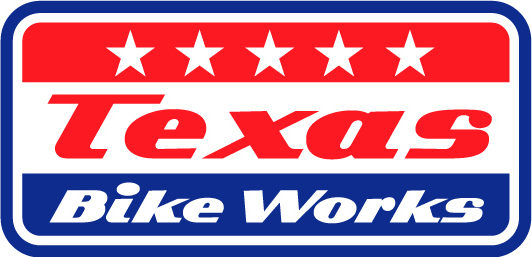
Texas Bike Works
www.TexasBikeWorks.com

Kustoms Inc.
KustomsInc@hotmail.com
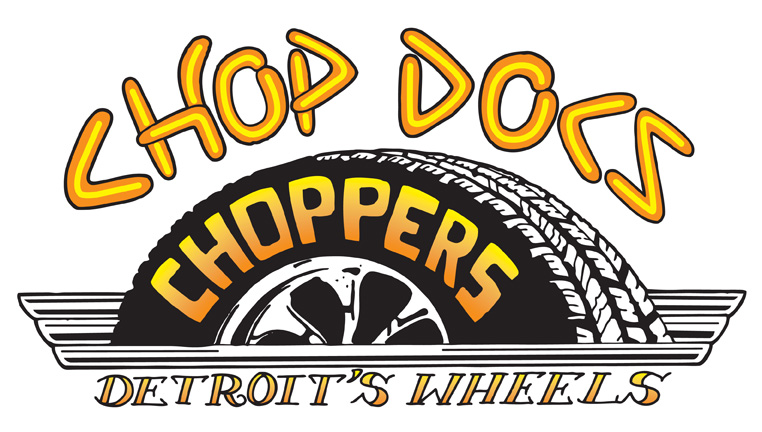
Chop Docs
www.Chopdocschoppers.com

3 Guyz
www.3Guyz.com
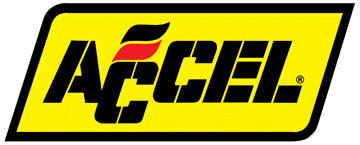
Accel
Accel-ignition.com
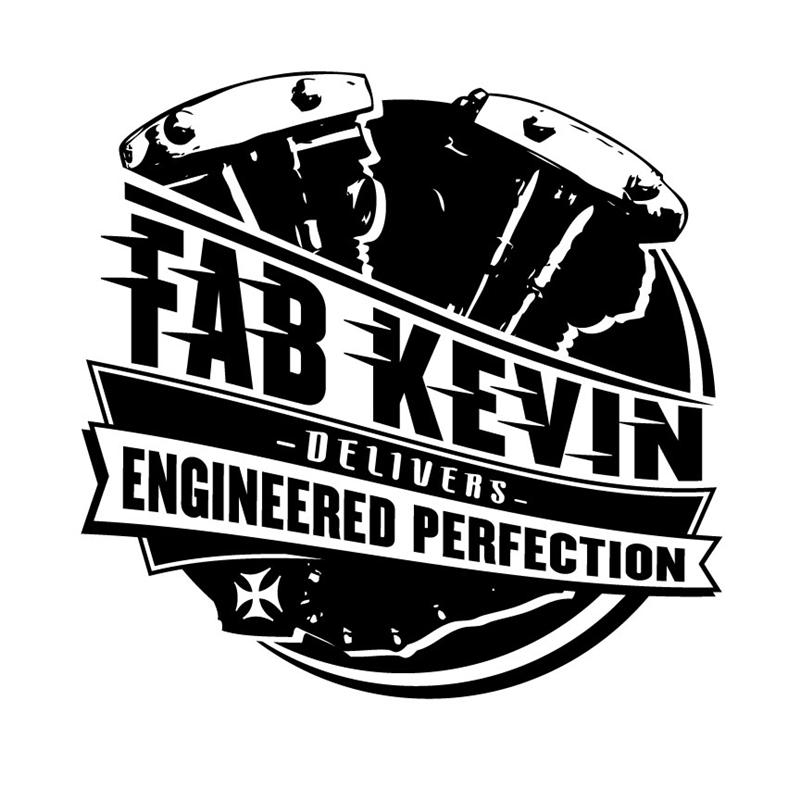
Fab Kevin
http://www.fabkevin.com/home.htm
.jpg)
Evil Engineering
www.evil-engineering.com
D&D Exhaust
http://www.danddexhaust.com/
Wire Plus
http://www.wire-plus.com/

Barnett
Barnettclutches.com
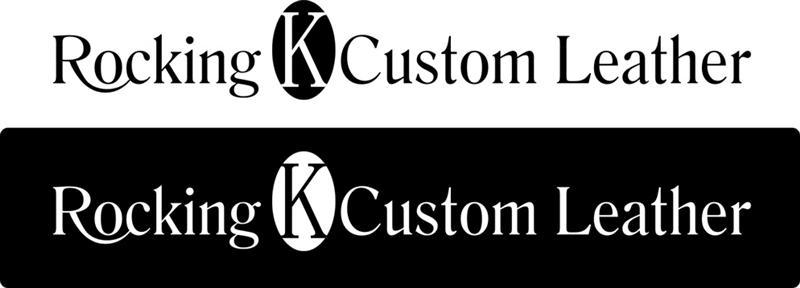
Rocking K Custom Leathers
howard.knight@montana.com
Rivera Primo
www.RiveraPrimoInc.com

Spectro Oils
www.Spectro-oils.com

Bell
www.moto@rcn.com

Metzeler Tires
www.metzelermoto.com
.jpg)
Hawg Halters

Handy Industries
www.HandyIndustries.com

Grip Ace
www.gripace.com
Biker’s Choice
www.bikerschoice.com
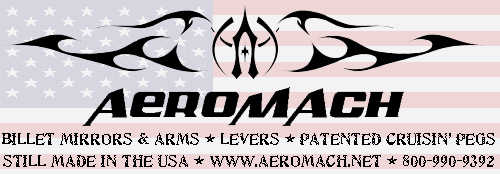
Aeromach
www.aeromachmfg.com

Ride Wright Wheels
www.ridewrightwheels.com

Biker Pros

Bare Knuckle Choppers
www.bareknucklechoppers.com

K&N
www.knfilters.com

Bikernet/Cycle Source Sweeps Build Part 4 Sponsored by Xpress
By Robin Technologies |

This segment will demonstrate again the level of quality craftsmanship and passion for our industry guiding this magnificent motorcycle project. We have some fun with these articles, but the level of talent and engineering directed at this motorcycle is impressive. Take for instance this Crazy horse engine from John White’s factory in Kent, Washington.

American Piledriving Equipment (APE) is the number one provider in research and development, production and sales of foundation construction equipment. APE has branch offices in Asia, Europe and every corner of the United States. But a big part of this man’s heart has been devoted to keeping the Indian heritage alive. When the Gilroy Indian factory stumbled in 2005 he purchased the remaining bottle cap Indian engines from the defunct facility. He began to study and refine this sharp looking air-cooled 45-degree V-twin.

Crazy Horse Motorcycles LLC, based in Kent, Washington, is the manufacturer of the “V-Plus” V-Twin motorcycle engine. They are an OEM supplier of this engine to individuals and custom bike builders. Each engine is proudly made in America with American components. They are basically built around the Evo platform and will fit any Evo model. The only quirky aspect is the carburetor facing out the left side of the engine, which I like, and it creates no obstruction for the rider of any bike with fatbob tanks; otherwise it is a minor consideration. Any Evo exhaust system will fit the Crazy Horse format.
“Our goal is to provide a distinctive, powerful, and reliable V-Twin American made engine. By using superior grade components and craftsmanship, along with a generous warranty, we intend to be considered among the best engine manufacturers in the industry,” said John White, the boss.

Paul Jr. Designs has recently teamed up with Microsoft to produce a unique configuration for Paul, a Trike! It is a very exciting design inspired by the new game, Gears of War. The bike features a Crazy Horse Motorcycle Bottlecap V-Plus engine, which Paul has been using for many of his more recent projects.

John secured the rights to build these unique engines, enhanced the oiling system, the cylinder cooling capabilities, and they even purchased Ramsden foundry castings, which are semi-permanent steel tooling, so even the cases are no-longer sand-casted. In fact, this 100-inch V-Plus addresses some of the problems when pushing the size of standard Evo engines, with heavier cases and barrel material for stronger head bolt connections, so this 100-inch configuration based around 3 5/8-inch bore and 4 ¼ stroke is built to last with 9.5:1 compression from Keith Black hypereutectic pistons.

The original Gilroy oil pump was an external bypass pump, which had a problem feeding excessive oil. Then they shifted to an internal bypass oiling system, which also failed. Crazy Horse ditched the old bypass pump and replaced it with a True Internal Bypass (TIB) oil pump. It reduced internal engine oil foaming and did away with all the old oiling issues.

This engine affords builders the use of any conventional Evo ignition system, including Compu-Fire, Crane Hi-4, or Daytona Twin-tec systems, you name it. The need to correct the carb mounting came up in a discussion in a dark alley behind Bandit’s Cantina. There was a drunken vote for moving it to the conventional right-hand position, but I disagreed and have a lump over my left eye to prove it. I like the unique aspects of the left-hand carb, and the fact that it doesn’t leave the left side bare. Plus, it’s classic, goddammit. I’ll fight for it again.

This is now a complete world-class unique 100-inch engine platform used by Paul Jr. on many of his projects, on Brass Balls Bobbers, and by custom builders over the globe. The components are all the finest available including JIMS sprocket shafts, and all the engines are assembled with JIMS special tools, as the lower end run-out is trued to .0001 tolerance. Can’t get much better.

Crazy Horse Motorcycles “V-Plus 100” engine
All brand new components,
NOT A REBUILD
Durable and reliable
Hand assembled
True Internal Bypass oil pump (T.I.B.) superior to other “improved” pumps
Viewable timing marks
Premium aerospace quality gaskets and fasteners
Standard Big Twin mounting points, fits most frames with minimal fuss
Available either carbureted or fuel injected
Several styles of ignition triggers available including conventional cone-type
Optional Retro-Gray color scheme
Left side intake

Either a Mikuni 42mm or an S&S Super E carburetor can be installed. The latter requires removal of the rubber flange adapter and enlarging the two bolt holes.

Every Crazy Horse engine is test-run on their engine stand through several heat cycles, and checked for potential leaking problems. Gary and Julie received the Crazy Horse engine in a proprietary molded heavy plastic, high-security engine shipping case, perhaps the most secure engine shipping device I’ve ever seen. No worries.


This website constantly collects data on all Indian motorcycles. This data is then titled and posted in the appropriate section for the benefit of all riders. John welcomes any data you wish to contribute.


Check the roller. In the next episode we will start the sheet metal fabrication process by cutting up a set of Biker’s Choice fat bob tanks. You’ll begin to see the true talents of the Kustoms Inc. fabricating and body work team. Hang on and don’t forget to enter to win this puppy. The odds are terrific. Hell, you only go around once.
–Bandit

BIKERNET/CYCLE SOURCE BUILD SOURCES

Xpress
http://mysmartcup.com/
Crazy Horse
http://www.crazyhorsemotorcycles.com/
Texas Bike Works
www.TexasBikeWorks.com

Kustoms Inc.
KustomsInc@hotmail.com

Chop Docs
www.Chopdocschoppers.com

3 Guyz
www.3Guyz.com

Accel
Accel-ignition.com
Fab Kevin
.jpg)
D&D Exhaust
http://www.danddexhaust.com/
Wire Plus

Barnett
Barnettclutches.com
Rocking K Custom Leathers
howard.knight@montana.com
Rivera Primo
www.RiveraPrimoInc.com

Spectro Oils
www.Spectro-oils.com

Bell
www.moto@rcn.com

Metzeler Tires
www.metzelermoto.com
.jpg)
Hawg Halters
www.HawgHalters.com

Handy Industries
www.HandyIndustries.com

Grip Ace
www.gripace.com
Biker’s Choice
www.bikerschoice.com

Aeromach
www.aeromachmfg.com

Ride Wright Wheels
www.ridewrightwheels.com

Biker Pros
www.BikerPros.com



Sturgis Shovel Gets A Wrap
By Robin Technologies |




VHT FLAMEPROOF COATING
VHT FlameProof Coating will renew and extend the life of any surface exposed to extremely high temperatures. This unique coating is a matte finish, silicone ceramic base widely used by the automotive industry on exhaust systems and the aerospace industry for jet engines, re-entry vehicles and other high temperature applications. VHT FlameProof Coating will withstand temperatures up to 2000°F (1093°C) and is ideal for use on headers, exhaust systems, or wherever an extreme temperature coating is needed.
Applications: Headers, Exhaust Manifolds, Piston Domes, Inside Heads

VHT FLAMEPROOF COATING does require curing and VHT includes some specific instructions on how to do this.
Curing FlameProof
VHT FlameProof Coating only attains its unique properties after correct curing (refer to instructions on the can).
Paint must be completely dry before curing
Heat to 250°F (121°C) for 30 minutes
Cool for 30 minutes
Heat to 400°F (204°C) for 30 minutes
Cool for 30 minutes
Caution: Do not exceed the temperature of the least heat tolerant component or the base metal
Paint must be completely dry before curing
Run at idle for 10 minutes
Cool for 20 minutes
Run at idle for 20 minutes
Cool for 20 minutes

Once I finished painting and curing(?) the exhaust pipe, it was time to get wrapping. J&P Cycles has a large selection of exhaust wrap to choose from in their online catalog and after looking at all the different options I decided to order the Design Engineering Inc, Titanium Exhaust Wrap Part #308-159. I also had them throw in a package of DEI’s 8-inch Stainless Steel tie wraps to secure the ends.

•Promotes increased flow for improved performance
•Reduces temperature & vibration breakdown
•Extremely pliable for a tight and secure wrap
•DEI HT Silicone Coating not required
•Pre-wetting roll not necessary for wrapping
•Hi-tech carbon fiber look
As usual my order from J&P Cycles showed up almost as fast as I hit the enter key on the order form. Once the wrap arrived I looked over DEI’s directions and proceeded to start wrapping the pipe.








Bennett’s Performance 2004 Dyna Build 106-Incher
By Robin Technologies |

Eric Bennett grabbed the shop door chain and hoisted the roll up door for the first time, in 2000. He started his mechanical career as a certified diesel mechanic with 60-weight always flowing through his blood stream. Finally, he gave into his entrepreneurial spirit and his desire to make motorcycles his life—he opened his own shop on Signal Hill. The rest is motorcycle history, much of it spent at the Bonneville Salt Flats with his dad, Bob.
He recently owned a modified twin cam FLH, but a customer made him a deal he couldn’t refuse, so he let it go. Then a deal on a Dyna surfaced and he made a quick move to snatch it. This time, he decided he would take it to the concrete and rebuild every aspect of the bike to be moderately fast, ultimately reliable, precise, and built with absolutely all the best mechanical intentions and components in mind. You get to see the 106-inch project unfold before your very eyes right here.

One of the benefits of running a service center in the largest city in Los Angeles County includes encountering every possible mechanical malady and the ability to research whatever solution might be necessary. Since LA is also the motorcycle media hub, he has constant opportunities to test anything new on the market. After working on Twin Cams since their introduction into the market in 1998, Eric has watched every configuration, modification, performance recipe, and model roll in and out of his shop.


With this build he could pour every lesson and improvement into his own ride. It started as a bone stock 2004, 88 cubic inch TwinCam. Eric could choose from any hot rod configuration in the world, but he chose to roll with a 106-inch kit from S&S and Branch re-tuned heads. He started the process by installing a JIMS Timken conversion into his left case and welding his crankpin into the S&S lower end after it was balanced.

“With superior S&S flywheels, I didn’t need to monkey with the cases,” Eric said.
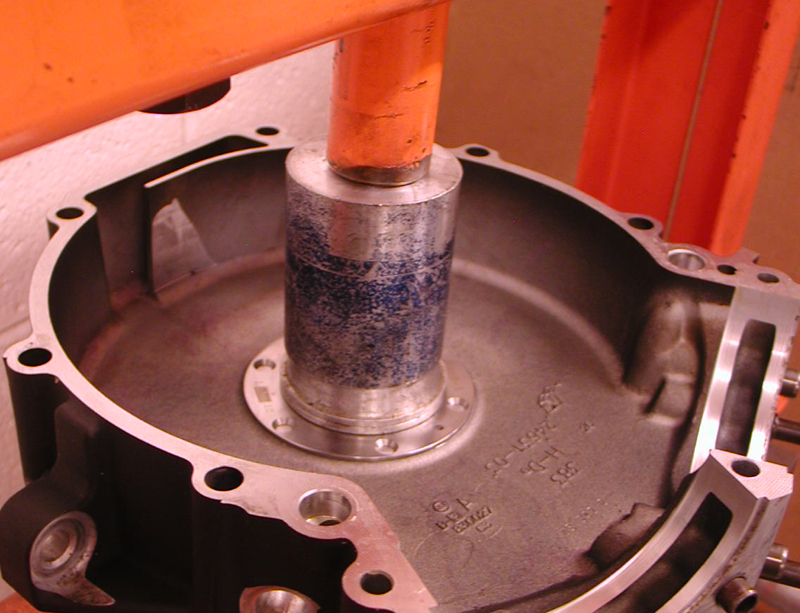
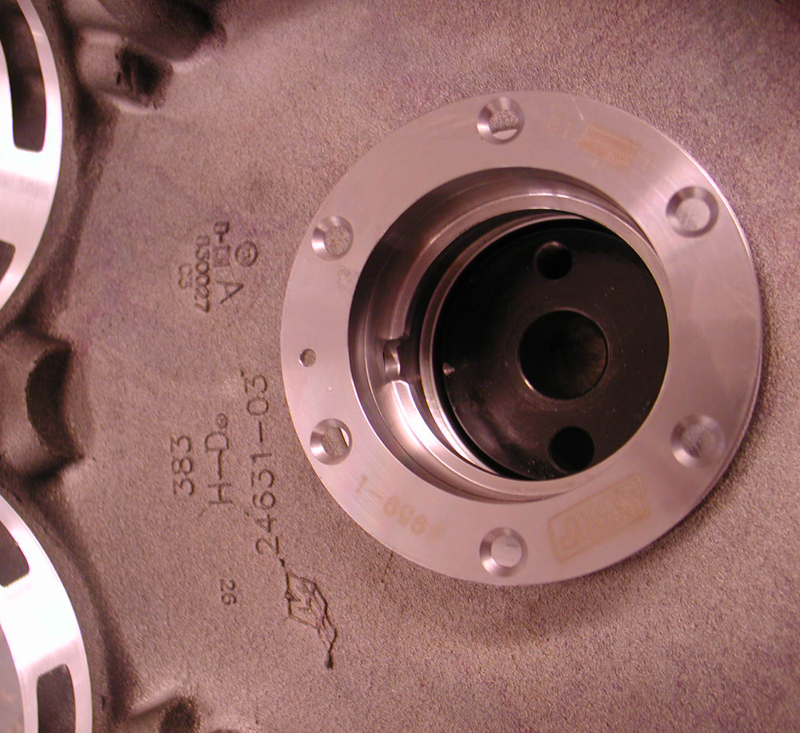
He bored the stock barrels from 3 ¾ to 3 7/8 inches and increased his stroke from 4 inches to 4.5. With JIMS tools he pressed in the JIMS race (using green Loctite) (9-59-1) while keeping his fixture perfectly flat and the hole in the race at 12 o’clock.


Using a JIMS fixture tool, he was able to drill guide holes in the case for Timken bearing and race oiling. The JIMS tool holds the drill and guides it. The drills are set to indicate the depth. Otherwise, he would need to use transfer punches and a milling machine. Then he used another JIMS tool to drill for the race fastener holes, and used tap guides to prevent misalignment.


“I’ve made tap guides for every size tap,” Eric said.


One of the benefits of the higher quality Timken lower end bearings is their ability to lock the lower-end into place.
“I have never seen a Timken bearing fail,” Eric said. Until recently Timken’s were used since 1957. “I’ve seen dozens of roller bearing failures!”
The cost saving shift to roller bearings started in 2003 during the 100th anniversary season. “The best Twin Cams were built in 2002,” Eric confirmed. “Better engines, still carbureted and with 1-inch axles for strength and stability.”


Eric used red Loctite on the race screws. He uses a tool for installing both Timken races at the same time. Kelly McKernnan, an amazing machinist out of Portland, Oregon, manufactured it.


The next phase included welding the S&S flywheels. Anytime Eric has a twin cam lower end out of a customer’s bike, he welds the crankpin in place with stainless TIG rod. It doesn’t create much heat and is not a structural weld; it just cements alignment and prevents shifting. He always checks the true after welding.

Next, he installed the Timken bearing by heating the race to expand it, and it slippped over the shaft easily. There is very little endplay in the shaft, just .001-.002-inch. Eric cinched down the top bearing with another JIMS tool, then pressed in the main seal and spacer with yet another JIMS tool.








At this point, we shifted to pressing the new S&S cam bearings into the new heavy-duty Screamin’ Eagle cam plate for hydraulic cam tensioners, but Eric chose to shift to an S&S gear drive system, so he blocked off the oil passages to the hydraulics.




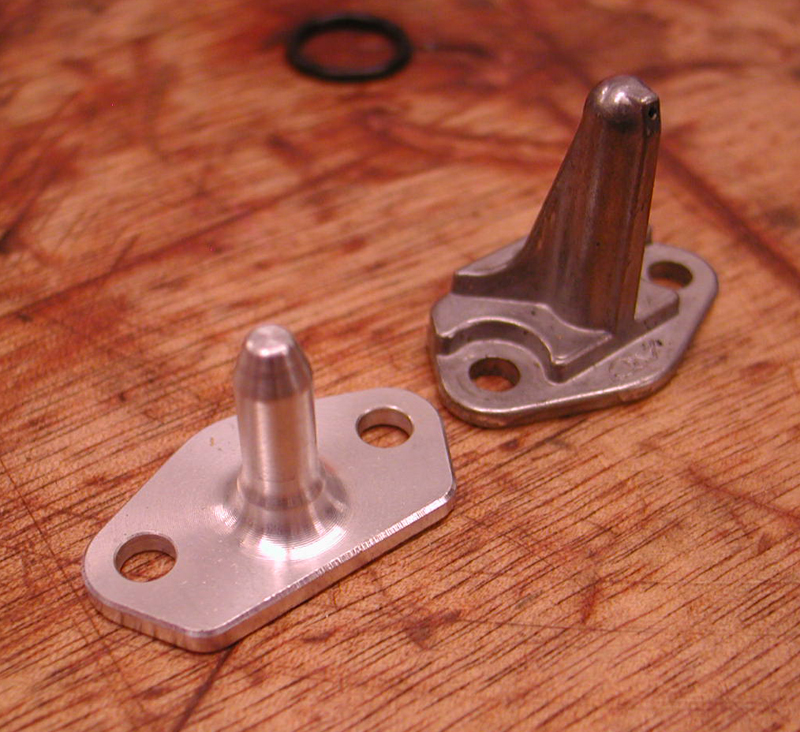





He installed Torrington cam bearings in the right case prior to installing the new cams. His plan called for installing a D&D Bob Cat exhaust system, which is 20 pounds lighter than a stock exhaust. D&D pipes come bolted together with all spring clips, flanges, and heat shields in place. “They take like two minutes to install,” Eric said.





“It’s the easiest system I have ever installed,” Eric said. “It comes with the all the components needed and the heat shields in place. No shimming is necessary or egg shaping holes.”
Day 2




We took a break for the day and grabbed a beer. But the next day, Eric installed a heavy duty Harley-Davidson pinion shaft bearing kit using a JIMS pinion bearing tool and it was time to slip the cases together with Yamabond on the case edge, while applying assembly lube on the pinion shaft. The case bolts were torqued to 18-22 ft. lb.





“Don’t forget the new oil pump O-ring when installing the high flow H-D pump,” Eric pointed out. Eric has an engine-building quirk. He continually turns the engine over, while rolling through the build process, and constantly tests for changes. “I want to catch anything that might bind early on,” Eric said. We actually ran into a small glitch while installing the cam plate.








But first, he installed the oil pump return gears, and then the separation washer and the spring, before the feed gear. He bolted the cam plate in place with ¼ -20 fasteners torqued to 120-inch- pounds. He used guide pins to help align the oil pump, and turned the engine over while tightening the pump so it would seat itself properly. He tightened two oil pump bolts, then removed the guide pins, and then tightened the other two Allens.




While aligning the cam drive gear dots, he installed the cams and used red Loctite on the drive gear Allen bolts, but used assembly lube on the washer for more accurate torque values and to prevent the bolt from galling against the washer surface for a false torque reading.





As we wrapped up the operation for the day, Eric installed the lifter with the oil holes facing the cam cover, then the guide pins, caskets and covers. No more lifter stools.



Day 3

Eric sub-leased a portion of his Signal Hill building to Branch O’Keefe, perhaps the best head porting business in California. I don’t want to put down any performance heads, but Jerry Branch, who is now about 82, built a helluva business around head performance.

Here’s a description of their heads from the Branch-O’Keefe site:
This is where is all began. Branch-O’Keefe is known throughout the industry for legendary cylinder head modification service. Our extensive reworking of stock Harley-Davidson cylinder heads begins with removal of the stock valve seats and guides. Next, the combustion chambers are heliarc welded to add additional aluminum alloy in the combustion chamber and around the valve seats for re-machining.

The valve seat pockets are then machined for larger nickel-chrome valve seats, and the combustion chamber is cut from the stock low compression rectangular shape to the legendary Branch “bathtub” chamber. After cutting the combustion chamber, new oversize valve seats and performance-quality valve guides are installed to tighter than stock tolerances.

The heads then advance to the porting room where the ports are fully hand-ported, blended and polished to Branch’s exacting specifications as proven on the dyno and flow bench. The head’s gasket surface is machined an additional 0.050-inch, which raises compression slightly. Finishing up, new oversize intake and exhaust valves (hard chrome stainless steel with stellite tips, polished face) are installed in bigger seats with a machined race-quality valve job and then hand-lapped. New seals and a high quality high-lift radius spring kit complete the installation.

The Branch O’Keefe head components are damn impressive from the titanium upper collars to the single oval wire spring with more travel and a larger diameter spring material. They have developed heads for JIMS big inch motors that produce 132 horsepower and ft-lb of torque, at an absolutely stock reliability level, even on a B motor. So natch, Eric had John O’Keefe and his master right-hand man, Paul go through his heads. Actually they used a formula they call the Dave Thew head. It’s a nickname for a performance formula. Dave beat everyone with these Branch O’Keefe head configuration. I will outline the different formulas next week.



We started the day installing S&S pistons with wrist pins first, since the oil rings pass over the wrist pin holes. Seems odd, but it’s the nature of the short-skirted piston. “Actually it allows for more skirt on stroker motors and does away with stroker plates,” Eric said. “This piston configuration will keep a stroker running longer.” The oil ring must be positioned with the dimple in the wrist pin area in a particular location to prevent rotation. The S&S pistons use four-piece oil rings with a removable ring land.



Eric installed the bottom compression ring so that the opening faced the exhaust port area. “No gaskets are used on the bottom of the cylinders,” Eric said, “just O-rings.” He compressed the rings carefully, lubed the inside of the freshly bored cylinder and slid the cylinder into place. Then Eric spun the motor over to check for binding. “I can’t wait to hear the D&D pipe.”




Eric started to install the heads using Cometic gaskets. The heads were torqued to Cometic specs and then he set to installing the rocker boxes and the fasteners, which were torqued to 22 foot-pounds. He started from the inside and worked out. Then he slipped in the S&S Quickee-Install intake pushrods for maximum valve opening. “I run premium S&S lifters with travel limiters,” Eric said. “They become solids at high RPMs.”



He tightened each pushrod until the valve slipped off the seat, and then let it bleed down, for about 10 minutes. He backed off the adjustment until he could spin each pushrod (one at a time). Then he backed off just one complete turn or six flats.




These shots were taken before John O’Keefe came up with a crazy notion to machine Twin Cam cylinder fins in a round configuration. Eric was knocked out by the procedure and pulled his barrels for the process.



In the next episode, Eric will slip the beautiful 106-inch Twin Cam into the stock frame, and we will discuss JIMS tools, while replacing the inner primary bearings, the slightly modified Dyna D&D pipe, and then and the new Rivera Primo clutch, the S&S G carb, and a new S&S high flow air cleaners.


Sources:
Bennett’s Performance
S&S
JIMS

Timbo’s ’64 FL Restoration (Part Two)
By Robin Technologies |

1964 was an interesting year for Harley. it was the last year of the 6-volt electrical system, and last year for the kick-start only. In 1965 they stepped up to 12-volt system and the first electric start and massive batteries started to appear. So let’s get started, I removed the primary, to my surprise it had a belt drive in it.


Someone wanted a step-up from the original chain drive, unfortunately it’s covered in oil that leaked from the main shaft seal and chain oiler that was never shut off. I might be able to save it with a healthy cleaning, we’ll talk about that later. After removing the primary drive and clutch, I thought the transmission would be a good place to start the restoration.

I did the research and found out all the parts I needed to rebuild the stock 4-speed transmission were available from J&P Cycle, and manufactured by JIMS. So off to the catalog I went. I ordered all the gaskets and seals I needed to rebuild it, except one, the main drive shaft seal (which was the worst one out of the bunch). According to the manual and other people I talked to, you need to invest $250 in the special tool from JIMS. It removes and installs that seal. However, I found an old friend (older than I) sorry Danny! LOL, who knew how to R&R the seal without the so called special tool, no big deal, according to him!



Be careful not to lose the gear shaft key for the sprocket. Also, there’s a small keeper key (looks like a flat L). It holds the sprocket far enough away from the seal, so it doesn’t ride on the seal. Keep it just in case. I later found out the new seal came with the keeper, but it’s better safe than sorry, if ya know what I mean.


There are some measurements you can take with feeler gauges for the shifter forks and spacers, refer to the manual.
Also you can check the timing shifter notches for alignment after the cover has been removed, also in the manual.

I actually ended up with two manuals, the original 1964 Harley service manual and a Clymer manual. Out of the two, I prefer the original service manual, it’s so easy to read and understand an idiot can follow it. Wait a minute! It’s also a good notion to pick up a parts manual for a variety of parts illustrations not found in service manuals.

For the serious rebuild the Wolfgang Panhead Restoration book, by Rick Schunk is an excellent guide. We were fortunate to have a low mileage transmission, and only a clean- up was required.

All the schematics are hand drawn in detail, very cool and definitely vintage. For the main shaft sprocket seal, I used the old school method my friend suggested, a slide hammer. Simply drill a couple of 5/32 holes in the seal, not too deep, about ¼-inch, screw in a sheet metal screw, and slam away!



It came out on the second slam of the hammer, YEAH! Installing the new one was just as simple, add a little Vaseline or WD40 to the outside of the seal and gently and evenly tap it in. I used a brass seal installer I had lying around, moving it back and forth on the seal so it doesn’t bind. Tap it down flush with the case, and your done. The JIMS tool insures that the seal is installed perfectly square into the case.
The rebuild kit came with all the gaskets and seals. There’s an O-ring seal in the kick-start shaft that rides between two brass bushings, be sure and replace it.

You can reach in with a dental pick or small screwdriver, and remove it without pounding out the bushings. The kit comes with new gasket for speedometer cable and neutral light indicator.

I polished up all the chrome it had and added a brass kick-start pedal, it looks great! Yeah, I know, not OEM pedal, but it looks cool and is pretty close to the era. I also ordered all new chrome case screws, the old ones were rusted, plus the chrome looks better anyway. I painted the inner timing cover and polished the out cap. You will find that almost all the transmission and engine cases are cadmium platted.


Lots of guys polish or chrome them, my customer wanted them to look as factory as possible. Here it is, the finished product. Not sure what I’ll tackle next, if you have any requests, let me know, I’ll be glad to accommodate. I’ll probably go right into the engine. That’s all for now, Tail Gunner out till next time.
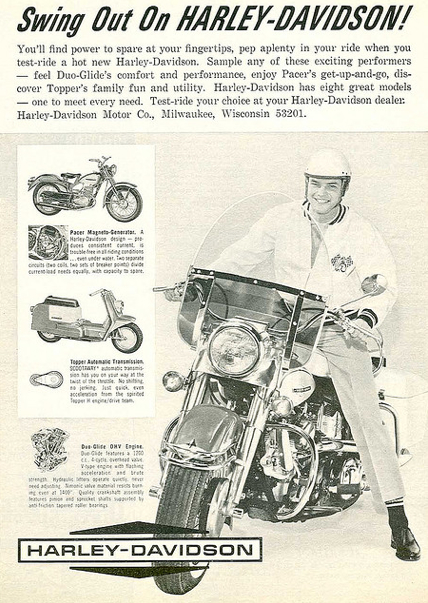
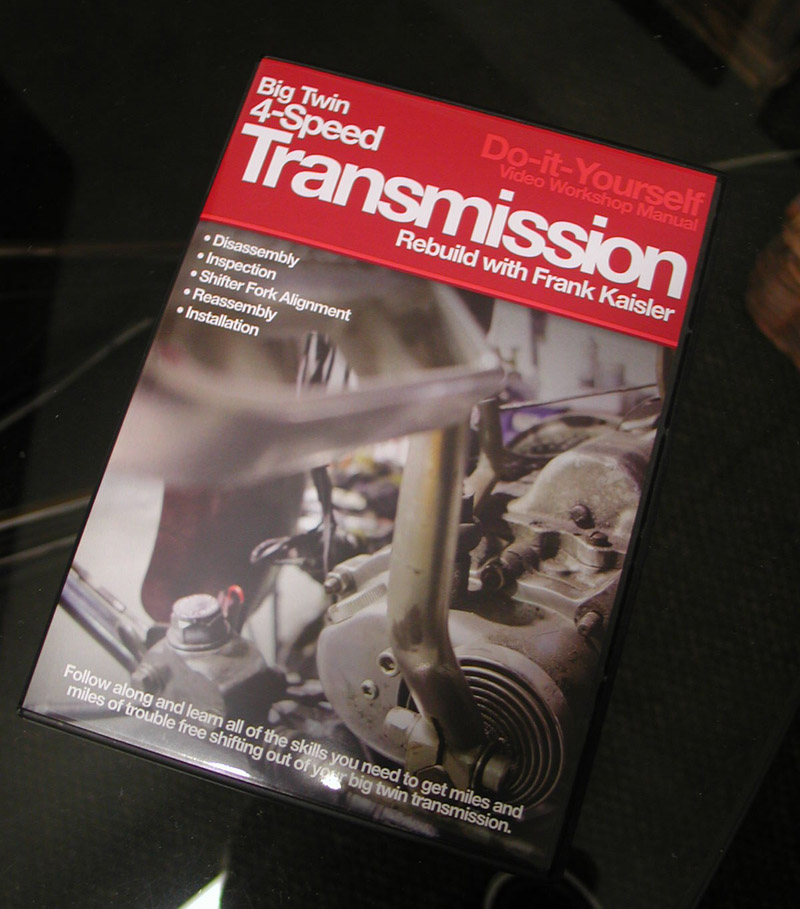

ACORN NUTS MEET THE MUDFLAP GIRL
By Robin Technologies |
|
||
Doug Coffey’s RetroMod Panhead Part 1
By Robin Technologies |


Other than the missing sidecar sidecar loops, it has a strong resemblance to a 1957 straight leg rigid frame. Exactly what I wanted.
Doug Coffey’s RetroMod Panhead Part 2
By Robin Technologies |

1964 Pan Head part 4 (frame)
By Robin Technologies |



Oil tank and lines were next on my agenda. I opted for a more modern spin on oil filter adapter, it looks nice and makes oil changes a snap. I kept the original oil filter that was polished just in case the owner wants to go all original some day.

The front forks have been completely rebuilt with all new modern seals, I had them polished also, looks nice! My customer decided he wanted a old school look on the wheels like they did in the ’30s and ’40s, so we blacked out the spokes and hubs leaving the star bearing plates and lug bolts the original parkerized coating.


Just about everything that is aluminum was polished like chrome. We kept to the OEM look on the primary and oil tank, which was black with touches of chrome. 

As for the clutch shift linkage (mouse trap), it also was completely gone through and restored, polished and looks like new. I did find out why they call it a mouse trap! Got my Fuckin’! finger snapped twice while trying to adjust it, IT HURT BAD!

The brakes have all new shoes, lines and fittings. Front brake is mechanical and rear is hydraulic, all juiced, adjusted and ready to go. Tires we picked are replicas of the day. They are Shinko reproduction white walls. Not the best, not the worst, but fit the budget just right. They have all new tubes, rim belts and have been balanced and trued by me.

The new exhaust went on comfortably with new head clamps. We kept the original muffler. It was salvageable. All the footboards have been rebuilt with new rubber and rivets and foot controls were installed. 
The original generator in chapter 3, was a no go, it had a bad armature and wasn’t cost effective for a rewind. So I ordered (cust. request) a new 6v generator with built in voltage regulator, it too looks very nice. Just a quick rundown, the electric system although all 6v, has all new solid state components i.e. electronic dual breaker distributor with a solid state voltage regulator, no mechanical parts. 

The electrical has all been installed and wiring is complete less the head light and tail light. Both electrical junction boxes have been rebuilt with new insulators and wiring harness.

There’s a lot of little things like the $5 chrome chain guard I found at the swap meet and some odds and ends I also found in good condition cheap, at the swap meet. You can see them in the photo’s if you look hard. The steering head lock was a nightmare. It took me months to track one down on eBay. Shortly after I purchased the one on eBay, JP Cycles informed me that they finally had one in stock, go figure!




Bikernet/Cycle Source Sweeps Build Part 7 Sponsored by Xpress
By Robin Technologies |
Hang on. We are two weeks away from running out to Vegas for Bikefest and pulling the winner of this most magnificent custom motorcycle, specifically built for Bikernet and Cycle Source fans, readers, and subscribers. You need to sign up, if you haven’t, or come to the Cashman Center in Vegas to grab a card and sign up for the drawing. You don’t need to be on site to win. After Bikefest, the scooter will return to Kustoms Inc. near Detroit, for final tuning and break-in before being shipped to the winner.

So here’s the update in a flash, after Bonneville, and heading smack dab against a Cycle Source Deadline. “I’m way behind,” said Chris Callen, the esteemed Editor da Emperor, in Chief, in Charge, in Trouble. This year has turned into the scrambling year. We are scrambling to finish projects; builders are scrambling to finish bikes. Chris scrambles every month to finish a magazine. It’s bananas.
The bike was displayed in Sturgis at the Broken Spoke. Then it returned to Grand Ledge, Michigan, down the street from Ron Finch, for final manufacturing and paint by the master of Chop Docs, Ron Harris, but let’s finish the pieces first.
“I kill batteries no matter what I do,” Gary Maurer said as we started to discuss the battery box. “When I carefully rubber-mount the bastards, they vibrated enough to rip the battery cables to shreds.” So now he puts a small rubber lining under the battery and bolts the unit down hard with Jules-made steel battery straps. He is now using Brail and Ballistic batteries with some luck. This is where I started to learn more manufacturing processes from Gary and Jules, again.
It’s interesting. I don’t consider myself a builder, and when I work with someone with the manufacturing knowledge of the Kustoms Inc. team, I know I’m just an enthusiast, not anywhere near a pro builder. This story contains a couple of fine examples of their expertise. The battery straps are easily bent after marking the position for the bend on the top corner edge of the battery. Jules made the hand bend with a solid bar of steel, and then noted the amount of metal used in the radius and worked it into the formula for the next bend so the strap fit the battery perfectly.
“There is a mathematical formula for this process,” Gary said. “You need to add or subtract material from the next bend, but we bend one side and then adjust the other.”
I also noted how perfectly the fender edge fit the line of the tire, since most fenders do not align with the tire radius. “We often scribe the radius of the tire on the fender and cut it to match perfectly,” Gary said.
He uses thick welder ground cable stock taped to the fender to give him the proper fender clearance. “Sometimes we use chunks of busted rear drive belts,” Gary said. “Sometimes, if need be, we can double the belt, or mesh the teeth for a slightly larger space.”
They break the chain to be as close to the center of the adjustment path as possible, with the engine, primary and transmission in place. Then they adjust the chain to be bowstring tight, and then they tape the spacing material to the tire and start mounting the fender.
This Bare Knuckles fender was bobbed and channeled on both sides by Jules. She often cuts with a plasma cutter, and then works the edge with Matabo grinder with flap wheels. Bare Knuckle fenders are made with solid, thick spun steel. They are as strong as a battleship hull and easy to work with. “Our plasma was toast,” Gary said, “so she used a high-speed cut-off wheel, then the Matabo and flap wheels.
I like the exhaust system he built with D&D components and a carbon fiber muffler. I asked how he held the components accurately together for tacking. “I start generally, but not always, with the muffler in place and move forward,” Gary said. “I hold the chunks in place with three fingers and tack them.” If his weld pulls away from the joint, he adds a small ball of rod to one piece, then holds them together, and heats the ball until it flows to the other tubing piece.
Note how Jules fashioned the lower fender mount to the frame so it acted as a battery strap mount and fender mount.
Then Gary built the sissy bar by hand-bending the steel rod. He machined each chunk of bar stock for the frame rails, and drilled them ½-inch so the rail would simply insert into the welded boss. Then he drilled and tapped them for setscrews. On the top, he welded a machined bung to the bar, and a drilled and tapped the bung to the fender, so the fastener simply slips through the sissy bar tab and screws into the solid bung on the fender.
With all the components tested and brushed with flapper wheels, Ron Finch stopped by and picked up the components for the trip to Ron Harris, a third generation paint and body shop guy. “I couldn’t touch a paint gun until I could bump a fender,” Ron said of his granddad. Back in the day, bodywork was hammered and filled with brazing and lead.
“My dad called Bondo Chinese lead,” Ron said. Then he ran down the Chop Docs custom paint process. From the photos, paintwork slides along like ironing an old pair of Levis (who the hell does that anymore?), but any top-notch painter has the talents of a concert violinist. It may look easy, but there’s a refined eye and level of perfection that turns any steel surface into a perfectly smooth piece of art.
As soon as Ron Finch dropped off the components and peeled out, Ron Harris cleaned the welds with a cookie wheel, and then scuffed all the surfaces with 80-grit for a world-class bonded protective coating. Initially, paint was used solely to protect a surface. Now it protects and adds the final illustrious finish.
Then he coated all the sheet metal surfaces with a filler Bondo skin coat and block-sanded the surfaces. This is where perfection and talent come into play. I’ve been there. I couldn’t Bondo a baby moon hubcap and make it look like new. There’s an eye for sanding just the right level of Bondo to capture the perfect slick surface.
He followed the Bondo coating with a skim coat of putty to capture imperfections, and then tested his eyes with various levels of Emory paper from 80-grit, to 150, to 320, so he can minimize his primer usage.
“I’ve been working with Stage 5 Coatings for two years,” Ron said.
Stage 5 Coatings was established in 2008 and is the newest and one of the fastest growing coatings suppliers in the United States. We are committed to selling jobber direct and establishing an exclusive territory for anyone that carries our lines. We strive to offer the best values available in the market. We are a small company that is personal and ethical. We build a personal working relationship with every customer, whether they are our largest or smallest. We believe when a customer buys from us, a partnership is formed, and is not just another customer. We have the industry experience to put ourselves in your shoes and understand the everyday struggles in the body shop business. From us to the jobber to manufacturing, we have the personal hands-on experience in all areas of the aftermarket coatings industry.
States with Stage 5 or Technico:
Michigan New York
Illinois Missouri
Texas Oklahoma
Wisconsin Oregon
California Arizona
Washington Georgia
Maryland Caribbean
Virginia
Ron is working with Ken Dudley on a line of Chop Docs candies. After he primed all the surfaces, he used a black spray bomb dusting to cause imperfections to surface. After any pits or surface maladies were dealt with, he water-sanded everything with 400 grit wet and dry, and then hand-sanded with 600 grit and finished off with Scotchbrite.
With the components hung in a booth, he primed them with two coats of sealer, and then hit them with the silver base coat and inner clear before taping off for the black pearl inlay. Then everything was cleared again and sanded with 600-grit.
This was Ron’s first attempt with green variegated leaf* using Mona Lisa glue to attach it to the paint surface. “It’s like a very thin, watered-down Elmer’s glue,” Ron said. “The leaf is so thin, it’s like dust in your hands.”
Once the leaf was glued into place and the area cleaned with a cotton ball or a brush, Ron hit it with another coat of inner clear, which locks the base down and leaves sort of a satin surface to adhere any art to, such as pin striping by John Harrow, who used a one-shot enamel sign paint called Kansas City Teal.
Now for the final six layers of gloss clear coats and 1500 grit wet sanding, followed by 3000 grit with water, and then buffing with polishing compound, finishing glaze, and spit shine. It’s Saturday, and by Monday, all the elements will be returned to Gary and Jules and Kustoms Inc. for final assembly. Ron volunteered to help. Unfortunately, he’s 140 miles away, but he drove out and spent all day, Sunday, helping with assembly. “It’s 80 percent there,” Ron said on his way home.
Speaking of volunteer efforts, this has been an amazing build with efforts from a variety of sources, all to create a bike we are giving away. No one made a dime off this puppy. It’s all American-made, and the whole gang pulled together to offer Bikernet and Cycle Source readers a shot at a world-class custom motorcycle—thanks. Chance of a lifetime, goddammit.
Dimensions: 5½” x 5½”


Xpress
http://mysmartcup.com/
Crazy Horse
http://www.crazyhorsemotorcycles.com/

Texas Bike Works
www.TexasBikeWorks.com

Kustoms Inc.
KustomsInc@hotmail.com

Chop Docs
www.Chopdocschoppers.com

3 Guyz
www.3Guyz.com

Accel
Accel-ignition.com

Fab Kevin
http://www.fabkevin.com/home.htm
.jpg)
Evil Engineering
www.evil-engineering.com
D&D Exhaust
http://www.danddexhaust.com/
Wire Plus
http://www.wire-plus.com/

Barnett
Barnettclutches.com

Rocking K Custom Leathers
howard.knight@montana.com
Rivera Primo
www.RiveraPrimoInc.com

Spectro Oils
www.Spectro-oils.com

Bell
www.moto@rcn.com

Metzeler Tires
www.metzelermoto.com
.jpg)
Hawg Halters

Handy Industries
www.HandyIndustries.com

Grip Ace
www.gripace.com
Biker’s Choice
www.bikerschoice.com
Aeromach
www.aeromachmfg.com

Ride Wright Wheels
www.ridewrightwheels.com

Biker Pros
www.BikerPros.com

Bare Knuckle Choppers
www.bareknucklechoppers.com





